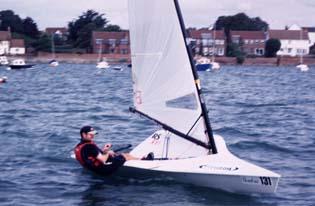Your Watersport
- Binoculars, VHF
- Clothing
- Compass /GPS / EPIRB / PLB
- DVDs
- E Foil
- Family Boating
- GPS / EPIRB / PLB
- General Chandlery
- Hydrofoiling
- Jet Ski Fishing
- Kayaking/Fishing
- Kitesurfing/boarding
- ROPES, WIND INDICATORS, Tell Tales
- Sailing
- Sails
- Snorkeling & Swimming
- Stand Up Paddleboard
- Starting Watches
- Sunglasses
- Surf Club
- Surfing
- Triathalon
- VHF Radio/Silva/GPS/Wind
- WINGFOILING
- Waka Ama
- Waterskiing/ Wakeboarding
- White Water Rafting/PackRafting
- Windsurfing/Foiling
Currently the most contentious aspect of Olympic sailing is rule 42 - the one that polices anything that comes outside propelling the boat other than by the action of the wind and the waves. This difficult subject is revisited in the months leading up to the Olympics in a vain hopeto see what it is the sailors are developing this time. When you look at rule 42 it allows for movement to adjust the trim of the boat, but not to energise the boat though waves. When I discussed this article with a top judge, he was able to say that he interpreted body movement inwaves as legal or illegal by imagining how those movements would effect the position of a chair on a polished floor. If the chair were to move across a room then the action would be illegal, but that other movements that merely changed the angle of the chair could be acceptable,except of course where the action of the sailor caused the leach to flick. He also stated that this was only his interpretation and that by no means would this be acceptable to all judges. Despite this, his words made great sense to me and took a cloud of misunderstanding away. It isvery hard to remain within the rule and to police the rule if you do not understand what it means. Hiking style
This does not include the added wind pressure in the sail that comes from bearing away in the gusts.
Kinetics - The simple 'purist' approach - passive movement - Related products developed by Rooster Sailing to aid the top class Laser Racer - Rooster Hiking Shorts - maximum comfort and stickability with batterns to aid hiking - arriving in April. Rooster Hike Boot -proved to be the best at the Youth Words! Rooster Padded Toestrap - helps thepointed toe hiker Laser Carbon Tiller - simply the strongest and very, very low! |
Clear Cart
Reload Cart
Please Login or Order as a New Customer
Login
Please login using your existing account
New customer
When you've finished you'll have the option to create a password which will allow you to save your details and make your future purchases even faster.






